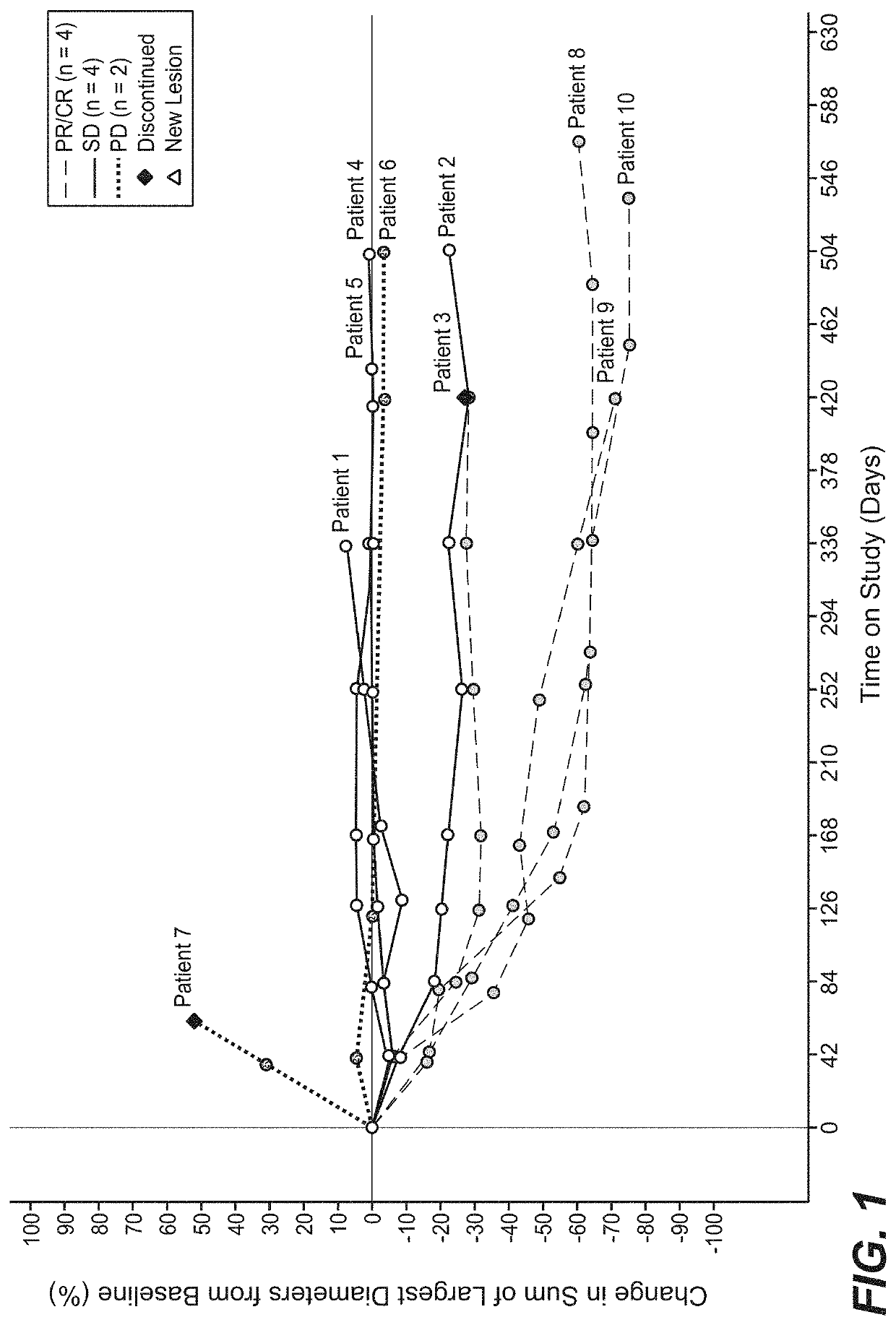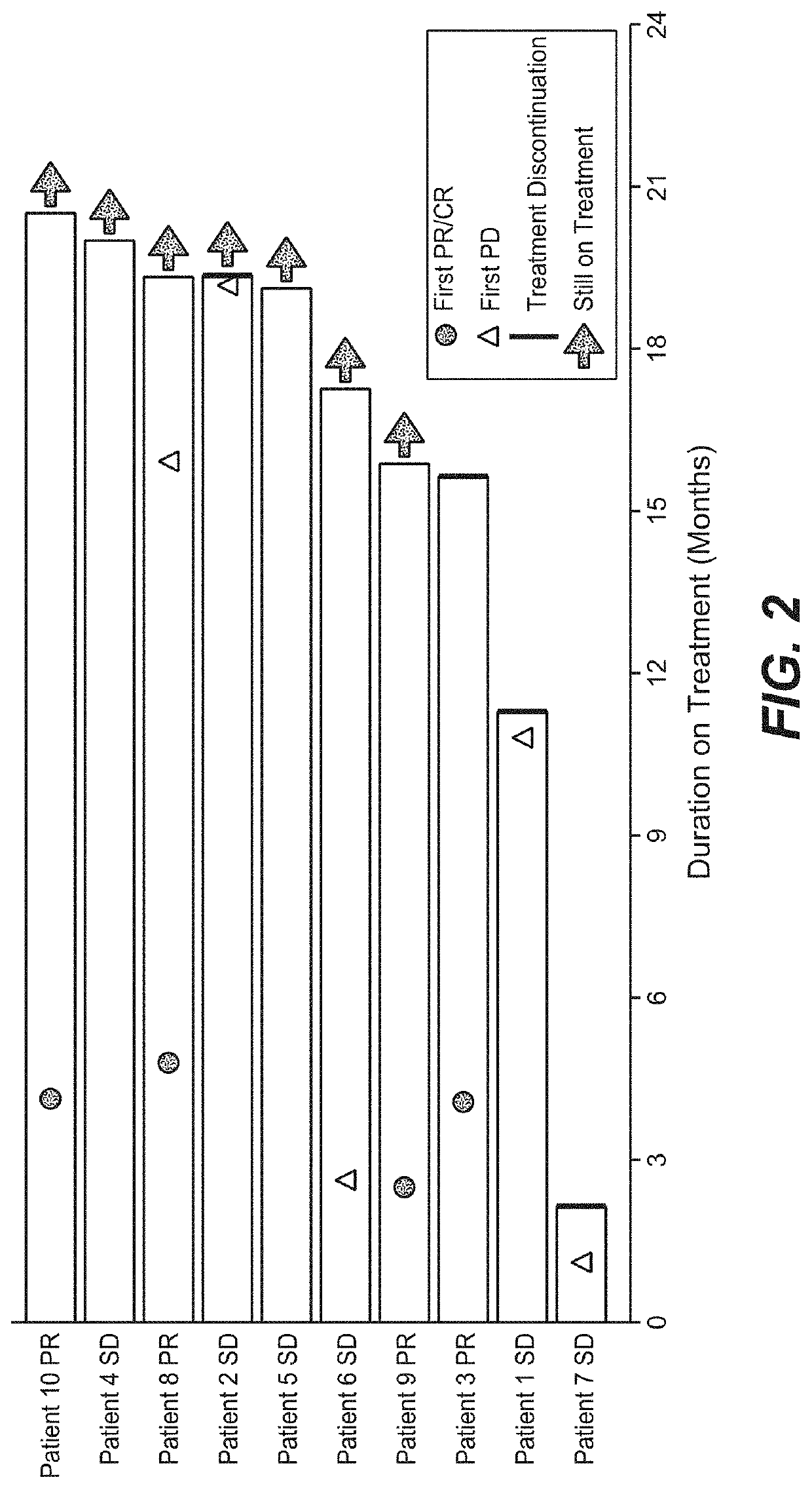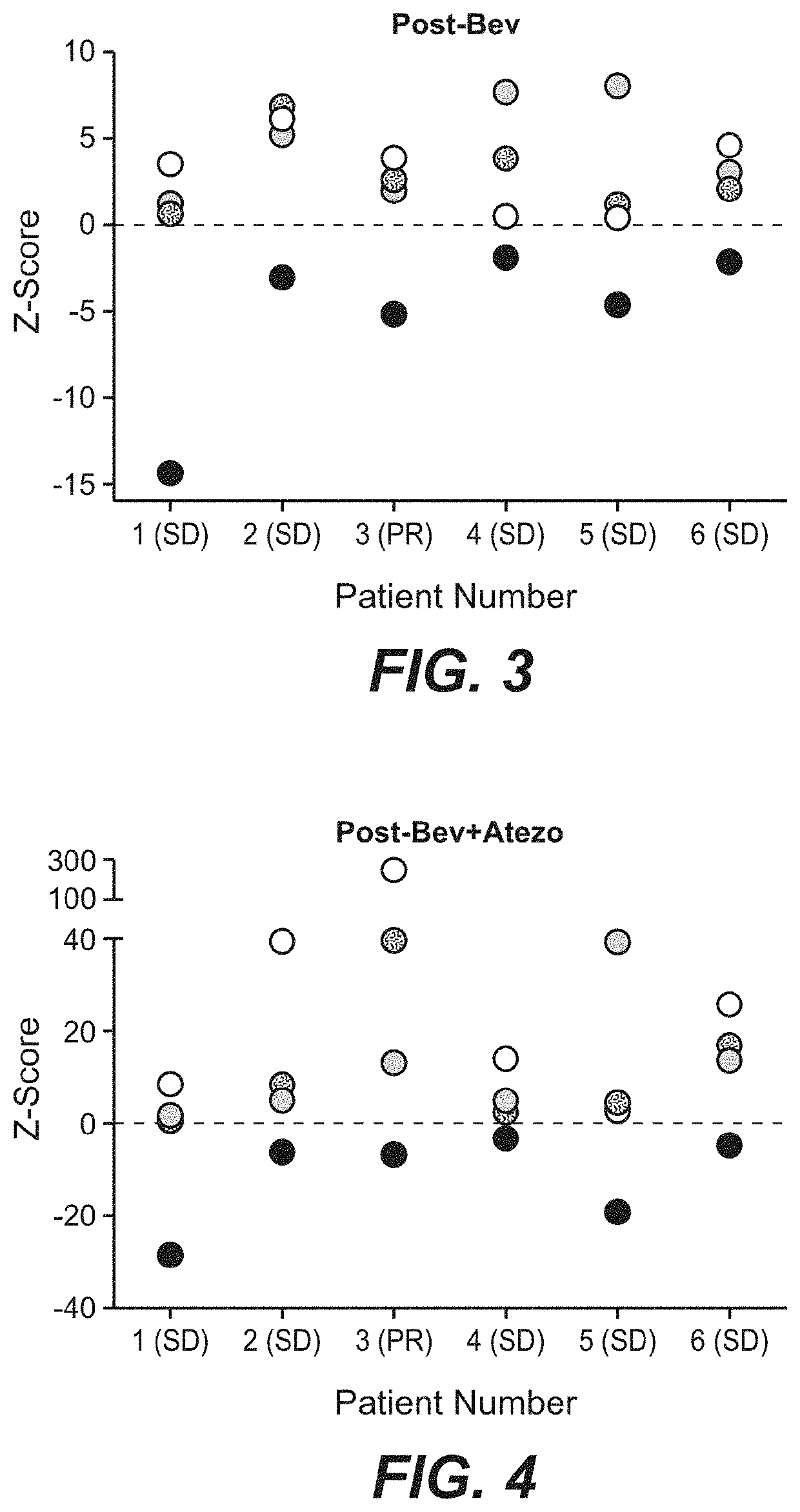Diagnostic and therapeutic methods for cancer
a cancer and diagnostic technology, applied in the direction of antibody medical ingredients, instruments, drug compositions, etc., can solve the problems of difficult timely detection and treatment of cancer, one of the most deadly threats to human health, and the occurrence of cancer in the early stages
- Summary
- Abstract
- Description
- Claims
- Application Information
AI Technical Summary
Benefits of technology
Problems solved by technology
Method used
Image
Examples
example 1
Materials and Experimental Methods
[0543]A. Study Design
[0544]The goal of the phase lb study described in Examples 1-4 was to evaluate the safety and tolerability of the anti-PD-L1 antibody atezolizumab, in combination with bevacizumab, a human, monoclonal, engineered anti-VEGF antibody concurrently administered by intravenous infusion every 3 weeks (q3w) to patients with previously untreated advanced metastatic renal cell carcinoma (mRCC). Treatment was continued as long as patients were experiencing clinical benefit in the opinion of the investigator (i.e. in the absence of unacceptable toxicity or symptomatic deterioration attributed to disease progression). Patients were allowed to continue to receive study treatment at the discretion of the investigator if pseudoprogression was suspected or if there was evidence of a mixed response. Study objectives included an evaluation of tumor and circulating pharmacodynamic markers associated with the administration of bevacizumab and atezo...
example 2
Gene Expression Analysis Identifies Biomarkers Associated with Bevacizumab Monotherapy and Bevacizumab and Atezolizumab Combination Therapy
[0573]A phase 1 b clinical study was performed in which 10 patients with previously untreated mRCC received a single dose of bevacizumab on C1D1, followed by combined administration of atezolizumab and bevacizumab every three weeks beginning on C2D1. Baseline demographics of the patient cohort are shown in Table 19. Partial responses (PR) were observed in four out of ten patients using RECIST v1.1, while an additional five patients had prolonged stable disease (SD) (FIGS. 1 and 2). The clinical activity observed in this small cohort was higher than previously obtained with either monotherapy. The duration of response has not been reached and the median time to response was 4.2 months.
TABLE 19Baseline DemographicsCharacteristicsN = 10Median age (range), y62 (42-74)Male, n (%)7 (70%)Patients with metastatic disease, n (%)8 (80%)Liver or lung5 (50%)...
example 3
Characterization of Biomarkers of Vascular and Immune Responses Following Bevacizumab Monotherapy or Combination Therapy in Both On-Treatment Time Points
[0577]To confirm the immune and vascular gene expression changes observed in the tumor, immune and vascular protein expression changes in pre-treatment and on-treatment tissue were evaluated by immunohistochemistry. A decrease in CD31, a marker of vessel-lining endothelial cells, was observed (FIGS. 5 and 6). Dual staining of CD34, another marker of endothelial cells, with alpha-smooth muscle actin (αSMA) showed that immature or unstable vessels (CD34+ / αSMA−) were primarily affected with bevacizumab treatment (FIGS. 7 and 8), consistent with other published reports (see, e.g., Gasparini et al. Nat. Clin. Pract. Oncol. 2:562-577, 2005). Morphological changes in endothelial cells were also evident for the combination treatment, consistent with findings in metastatic melanoma following ipilumimab and bevacizumab treatment (see, e.g., H...
PUM
| Property | Measurement | Unit |
|---|---|---|
| of time | aaaaa | aaaaa |
| of time | aaaaa | aaaaa |
| of time | aaaaa | aaaaa |
Abstract
Description
Claims
Application Information
 Login to View More
Login to View More - R&D
- Intellectual Property
- Life Sciences
- Materials
- Tech Scout
- Unparalleled Data Quality
- Higher Quality Content
- 60% Fewer Hallucinations
Browse by: Latest US Patents, China's latest patents, Technical Efficacy Thesaurus, Application Domain, Technology Topic, Popular Technical Reports.
© 2025 PatSnap. All rights reserved.Legal|Privacy policy|Modern Slavery Act Transparency Statement|Sitemap|About US| Contact US: help@patsnap.com



